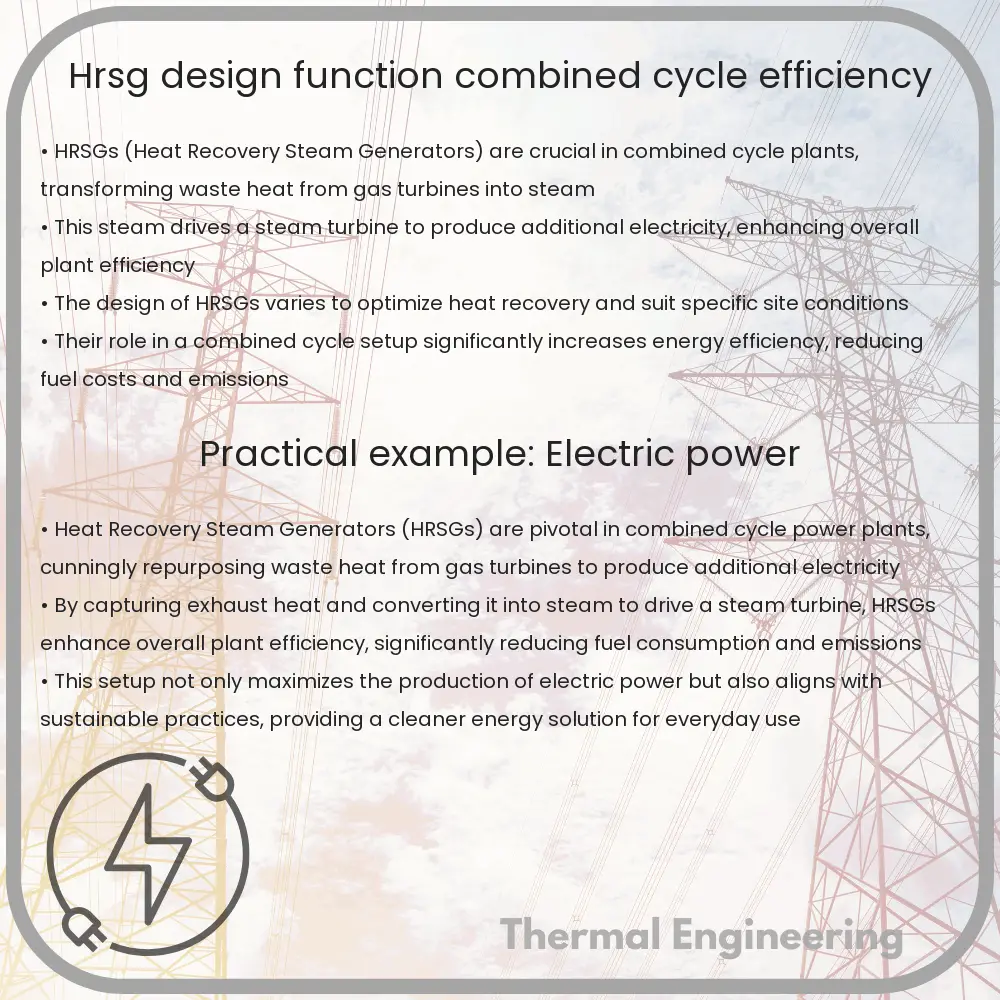Learn about Heat Recovery Steam Generators (HRSG), essential for improving efficiency in combined cycle power plants by utilizing waste heat from gas turbines.

Introduction to Heat Recovery Steam Generators (HRSG)
Heat Recovery Steam Generators (HRSGs) are crucial components in the power generation and industrial processes, serving a key role in energy efficiency improvement. HRSGs capture exhaust heat from gas turbines and use it to produce steam, which can then be used to drive a steam turbine or for other industrial processes. This ability to utilize waste heat significantly enhances the overall efficiency of the power generation cycle, commonly referred to as a combined cycle power plant.
Design of HRSGs
HRSGs are custom-engineered to fit the specific requirements of each application, with design variations that depend on factors like the type of fuel used, the power output required, and environmental regulations. Commonly, HRSGs consist of three main sections: the economizer, the evaporator, and the superheater.
- Economizer: The economizer preheats the feedwater using exhaust gas from the gas turbine. This step is fundamental in increasing the efficiency of the steam cycle.
- Evaporator: Here, the preheated water is converted to steam using the remaining heat in the exhaust gas.
- Superheater: The steam produced in the evaporator is then passed through the superheater to increase its temperature above the saturation point, thereby improving the efficiency and power output of the steam turbine.
Additionally, HRSGs can include features such as duct burners for supplementary firing, which boost steam production during peak demands or when the gas turbine output is low.
Function of HRSGs
The primary function of an HRSG is to recover the thermal energy from the gas turbine’s exhaust. This process begins when hot exhaust gases from the gas turbine enter the HRSG and pass through its various components. The heat from these gases is transferred to the water/steam circuit, effectively converting water into high-pressure steam. This steam can be used for additional electricity generation in a steam turbine, significantly boosting the efficiency of the plant.
Combined Cycle Efficiency
In combined cycle power plants, both gas and steam turbines are used to generate electricity. The overall efficiency of combined cycle systems can reach up to 60%, significantly higher than the typical efficiencies of single-cycle gas turbines, which range around 35-40%. This increase in efficiency is largely due to the addition of the steam cycle powered by the HRSG.
The formula for calculating the efficiency of a combined cycle is given by:
ηcombined = (1 – (1 – ηGT) * (1 – ηST))
- ηcombined is the overall combined cycle efficiency,
- ηGT is the gas turbine efficiency,
- ηST is the steam turbine efficiency.
This equation indicates that the efficiency of the steam cycle adds to the efficiency of the gas turbine cycle, thereby improving the total output efficiency of the power plant.
Conclusion
Heat Recovery Steam Generators (HRSGs) are vital for enhancing the efficiency of combined cycle power plants. By recovering waste heat from gas turbines and converting it into steam, HRSGs make an essential contribution to the profitable and environmentally friendly generation of power. As technology advances, further improvements in HRSG design and operation are expected to continue enhancing their performance and efficiency. This makes HRSG an indispensable tool in the field of energy engineering, balancing energy production with environmental sustainability.